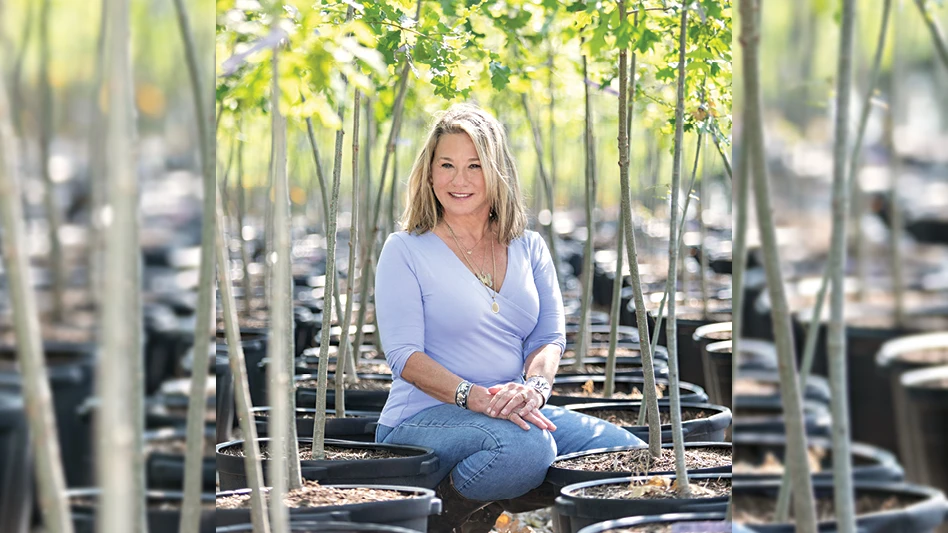 In Nursery Management’s Nov. 2012 State of the Industry story, labor issues were named the No. 1 greatest problem facing the green industry in 2013.
In Nursery Management’s Nov. 2012 State of the Industry story, labor issues were named the No. 1 greatest problem facing the green industry in 2013.
We spoke with Craig J. Regelbrugge, co-chair of the Agriculture Coalition for Immigration Reform (ACIR) and vice president of government relations at the American Nursery & Landscape Association, to find out how much progress has been made. With ACIR, Regelbrugge has been working closely with the policymakers in Washington to change the immigration policy.
On April 16, the bipartisan group of senators known as the ‘gang of eight’ introduced S. 744, the Border Security, Economic Opportunity and Immigration Modernization Act of 2013. The 844-page bill is slated for discussion and amendment in the Senate Judiciary Committee beginning May 9 before moving to a vote of the full Senate as early as June.
What are the latest happenings in Washington?
There is a four-Democrat, four-Republican ‘gang of eight’ that worked through most of the provisions of the broader bill.
There is a smaller working group that specifically has been hammering out agricultural provisions. Two of those people are part of the broader gang of eight, two are not. The person leading it is Sen. Dianne Feinstein (D-California). The Republican lead is Marco Rubio of Florida. The other two members on agriculture specifically are Sen. Michael Bennet, (D-Col.) and Sen. Orrin Hatch (R-Utah).
Earlier in the year, they issued a set of principles for the elements they believe need to be in a reform bill. It recognized the need for unique agricultural provisions in two different places. We feel positively that the unique needs of agriculture were recognized in two key places in the framework.
First, it recognized the need for the so-called 11 million — unauthorized immigrants living in the U.S. — to get into a probationary or provisional status and earn their way to the right to petition for permanent residency.
Second is the need for unique treatment for agriculture with respect for future legal visa programs.
What are the major changes this reform aims to enact?
The basic structure of the agriculture section of the bill will have two distinct sections. The first will deal with the current workforce and the second will deal with the future worker program.
In the proposed bill, employees who could prove they are experienced farm workers based on completing a minimum of 100 days or 575 hours in the past two years would be able to enroll in a “Blue Card” program. If they continue to work in agriculture for 100 days per year over the next five years or 150 days per year for three years, they can earn the right to be able to apply for legal permanent residency. To be eligible, workers must be able to show they have paid all taxes, have not been convicted of any serious crime, and pay a $400 fine.
That is important, because about 70 percent of the hired labor force working in the industry doesn’t have good papers. They have papers; their papers look good, but they’re not good. So this is an opportunity for these people to be able to come out of the shadows and earn their way forward to legal status.
How about the second section of the bill?
The second component of the bill is the component dealing with the future worker program. Right now we have a temporary and seasonal worker program called H-2A. Most of the industry is frustrated with it and very few actually use it at all. It provides around 4 percent of the total labor need.
Our goal this year has been to push for establishment of a new program that would replace H-2A.
How would this new program work?
The new program would allow for a couple different kinds of hiring relationships. It would allow growers to hire workers who are on an at-will, portable visa. They have the freedom to potentially move on from one employer to the next, to move among job opportunities that exist in agriculture during the life of their visa. Also, the application process would be vastly simpler than H-2A. The role of the labor department would be minimized or preferably eliminated. The labor department would still have wage and hour enforcement authority, but would no longer be involved every step of the way in determining whether the employer actually needs the workers.
Part of the reason the current program doesn’t work is because the Department of Labor doesn’t want it to work. The way they operate it, they throw roadblocks up at every turn and intersection. So there is a real desire to minimize the DOL’s role. Our hope is these workers can receive equivalent protections that U.S. workers receive under the law.
What can growers do to speed along reform that would work for them?
Leaving it to your associations and professional lobbyists to get the job done doesn’t cut it. Our role and our work is important, but if members of congress don’t hear about the need to deal with it locally, our work is 10 times harder. Maybe 100 times harder. Elected officials need to hear locally that this is a serious economic problem and we need to solve it.
Whether it’s periodically sending a letter or going into a district office for your two senators and representative, or having them out to your greenhouse or nursery operation to build their educational awareness, it all helps. There is nobody in a better position to explain how the economics work than someone doing it for a living – somebody who can make it personal.
What tends to be the case with our members is maybe they have 25 people on the payroll year-round and another 100 seasonal workers they hire for a long season during the year. If those seasonal workers aren’t there, the 25 people’s jobs disappear too. If you can’t get the production done during the season, you can’t sustain the business. Meanwhile, you have all the supplies, growing media, pots, equipment — everything that goes into producing plants which is being consumed, much from the local community distributors. The economists tell us that for every farm worker job, there are about three jobs in the upstream and downstream economy that are off the farm, but they exist because the farming is going on.

Explore the June 2013 Issue
Check out more from this issue and find your next story to read.
Latest from Nursery Management
- The HC Companies, Classic Home & Garden merge as Growscape
- Eason Horticultural Resources will now officially be known as EHR
- BioWorks receives EPA approval for new biological insecticide for thrips, aphids, whiteflies
- Ellen Mackenbach-Lakeman appointed new CEO of Dümmen Orange
- Southern Garden Tour sets 2025 dates for trial garden open houses
- New book explores plants that thrive in Rocky Mountains
- American Floral Endowment establishes Herman Meinders Memorial Tribute
- These companies are utilizing plastic alternatives to reduce horticultural waste





